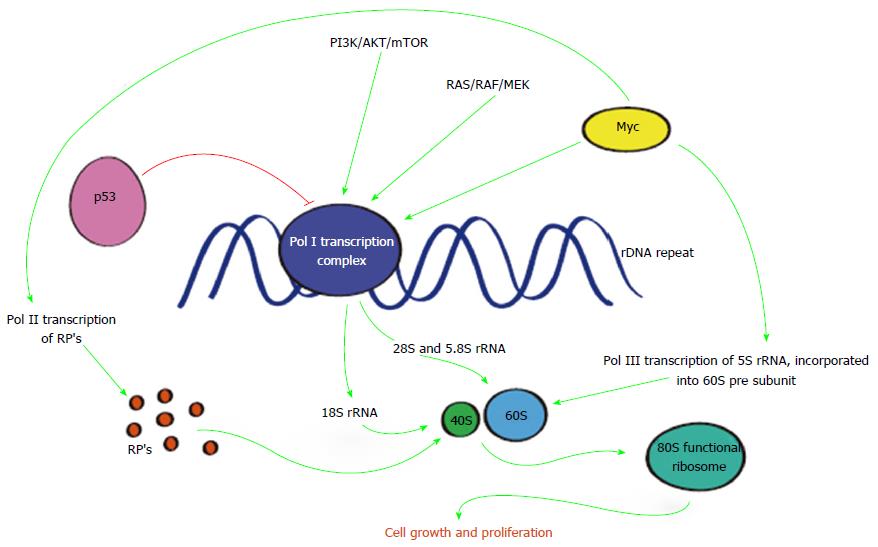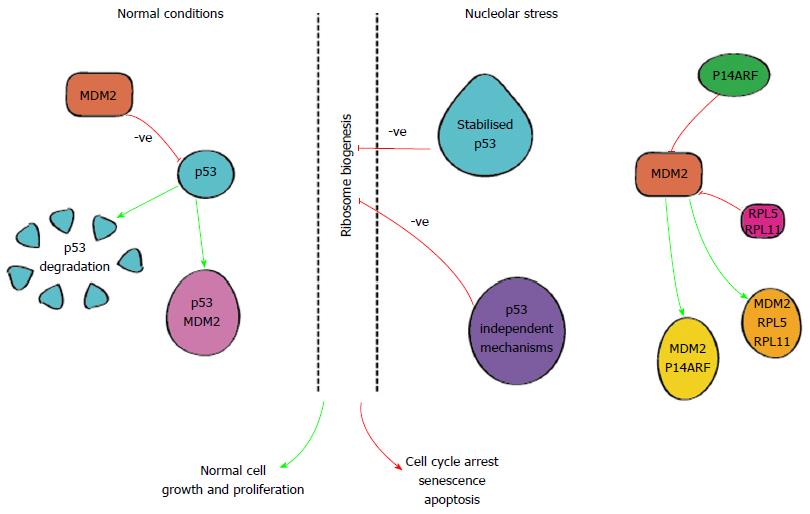Copyright
©The Author(s) 2017.
World J Gastroenterol. Apr 7, 2017; 23(13): 2276-2285
Published online Apr 7, 2017. doi: 10.3748/wjg.v23.i13.2276
Published online Apr 7, 2017. doi: 10.3748/wjg.v23.i13.2276
Figure 1 Schematic of major pathways associated with pancreatic ductal adenocarcinoma and site of action of current treatments.
Multiple pathways and receptors are associated with the development of pancreatic ductal adenocarcinoma (PDAC) including epidermal growth factor receptors (EGFR), human epidermal growth factor receptor 2 (Her2), and vascular endothelial growth factor receptor (VEGFR). All of these have important roles in the RAS/RAF/MEK/ERK and AKT/PI3K/mTOR pathways involved in cell growth. EGFR also has a role in the JAK/STAT pathway necessary for activation of signalling cascades and gene transcription. Transforming growth factor (TGF-β) is a multifunctional cytokine involved in various processes some of which are mediated by SMAD 4, a known mutation associated with development of PDAC. Current therapeutics target these processes at various sites.
Figure 2 Pathways involved in ribosome biogenesis.
The first rate limiting step in ribosome biogenesis is the transcription of the rRNA genes by Pol I which forms a multiprotein transcription complex at the rDNA promotor[62]. Green arrows indicate up stream regulators which exert positive effects on the Pol I transcription complex including multiple pathways such as PI3K/AKT/mTOR, RAS/RAF/MEK and Myc which functions as the “master regulator” for cell growth[64]. The mature rRNAs together with ribosomal proteins assemble into the 40 and 60S ribosomal subunits, which then form the functional 80S ribosome[62]. Transcription of the rDNA repeat is negatively influenced by p53 (as shown by the red line) to ensure that cell growth/proliferation is tightly regulated.
Figure 3 Effects on ribosome biogenesis under normal conditions and in response to nucleolar stress.
Under normal conditions, p53 levels are kept at a minimum by MDM2. This allows normal cell growth and proliferation. With nucleolar stress, RPs L5 and L11 are able to bind to MDM2 as does p14ARF. This blocks the ability for MDM2 to inhibit p53. Similarly, p53 independent mechanisms also block ribosome biogenesis leading to cell cycle arrest, senescence or apoptosis.
- Citation: Diwakarla C, Hannan K, Hein N, Yip D. Advanced pancreatic ductal adenocarcinoma - Complexities of treatment and emerging therapeutic options. World J Gastroenterol 2017; 23(13): 2276-2285
- URL: https://www.wjgnet.com/1007-9327/full/v23/i13/2276.htm
- DOI: https://dx.doi.org/10.3748/wjg.v23.i13.2276











